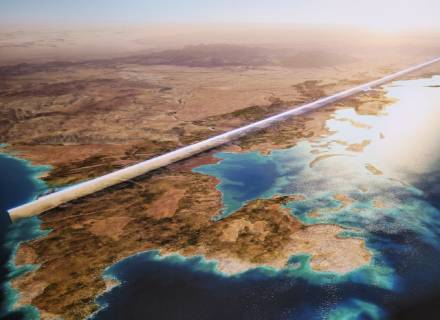Most of the projects running under Saudi Arabia’s ambitious “Vision 2030” economic diversification agenda are running as per the schedule.
The ambitious strategy has resulted in 1,064 initiatives, of which 87% are either completed or on track, according to a report by the state-owned Saudi Press Agency (SPA).
In 2023, Saudi Arabia saw improvements in several indicators, including life expectancy, homeownership rates, heritage sites, Umrah performers, visitor numbers, and health services coverage.
One more shot in the arm came on April 2024, as the Kingdom’s megaproject NEOM, touted one of the infrastructural show-stoppers for the “Vision 2030,” secured a new revolving credit facility (RCF) worth 10 billion Saudi riyals (USD 2.67 billion) from nine local banks to drive forward its construction plans.
The facility, arranged by Saudi National Bank, Riyad Bank, and Saudi Awwal Bank, will support short-term financing requirements. Other participant banks during the process were Al Rajhi Bank, Alinma Bank, Arab National Bank, Bank Albilad, The Saudi Investment Bank and Bank AlJazira.
The new RCF follows the SAR 23 billion agreement signed by NEOM and their partners to finance the NEOM Green Hydrogen Company. In 2023, the mega developer secured a SAR 3 billion debt financing to partially fund NEOM’s development of Sindalah, the luxury island destination that will open in 2024.
Listing Out The Achievements
According to the programme’s annual report for 2023, Saudi Arabia recorded 106 million visitors in 2023, including 27.4 million foreign visitors, thanks to the strategy, making the Kingdom the second-fastest-growing tourist destination globally.
A record 13.56 million foreign performers participated in Umrah, surpassing the goal for 2023 and accounting for almost half of the 30 million performers the 2030 strategy aimed for.
Additionally, there are now seven Saudi heritage sites on the UNESCO list, exceeding the 2023 target and coming very close to the 2030 goal of eight.
Regarding healthcare, the proportion of the population receiving services is currently 96.4%, exceeding the 96.4% goal set for the previous year.
In terms of homeownership rates, over 66,000 families in the Kingdom have been granted new residential properties; in August alone, 24,000 new homes were launched.
Currently, 63% of Saudi citizens own their homes, which is a significant increase from the baseline of 47% and surpasses the 2023 target of 63%.
Having 70% of the population own a home is the ultimate objective. The kingdom now has a life expectancy of 78.11 years, which is higher than the baseline of 77.11 years and gets closer to the 80-year goal outlined in the vision.
The Road Ahead
Meanwhile, Saudi Arabia’s Finance Minister Mohammed Al Jadaan has said that the Kingdom would adapt to current economic and geopolitical challenges and “downscale” or “accelerate” some of the initiatives.
“The Kingdom could increase its GDP growth rate by boosting oil production but such an expansion would not be “quality growth, but quantity growth,” the Minister said during a panel session at a special meeting of the World Economic Forum in Riyadh.
The government was aiming to accommodate 1.5 million residents within The Line, a 170km-long linear smart city under construction in NEOM, which is in the Tabuk province. However, Bloomberg reported in April 2024 that the project is set to host fewer than 300,000 residents by 2030, with officials expecting only 2.4km of the project to be completed by that time.
“We are not complacent but we are very pleased with what was achieved. A lot of the targets have been over delivered, there are challenges obviously, and this is why I said we don’t have any ego. We will change; we will adjust [or] extend some of the projects. We will downscale some of the projects [and] accelerate other[s],” Mr Al Jadaan concluded.

